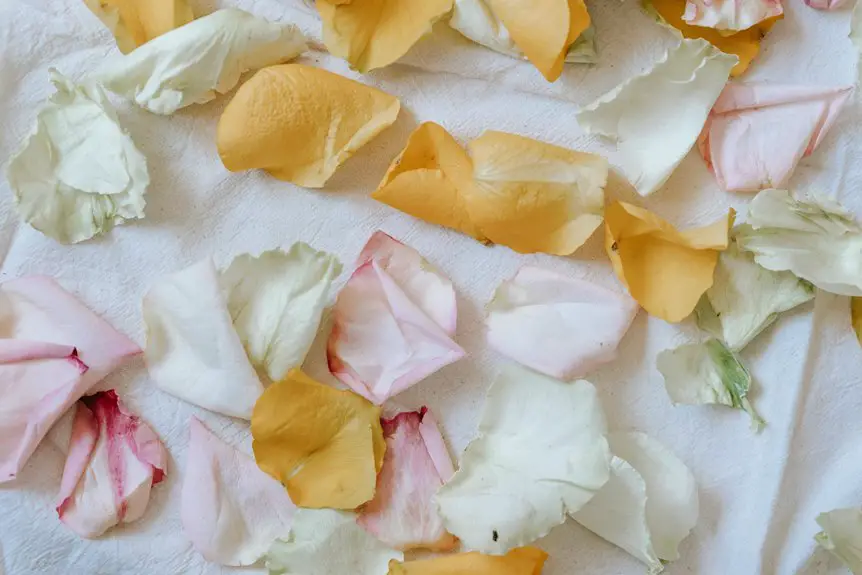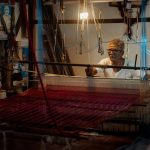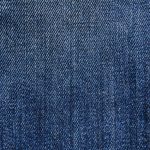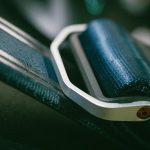You’ll find reverse sateen fabric is a cotton material woven with its weft threads floating over the warp, unlike regular sateen where warp threads dominate the surface. This gives reverse sateen a softer, matte look and a cozy, brushed feel instead of a shiny finish. It’s breathable, durable, and ideal for comfy bedding and casual wear. If you want to understand its unique weave, texture, and care, keep exploring what makes it special.
Table of Contents
Key Takeaways
- Reverse sateen fabric uses a satin weave where weft yarns float over warp yarns, reversing the traditional sateen structure.
- It features a softer, matte finish with a subtle brushed texture, contrasting the smooth, lustrous face of regular sateen.
- The fabric emphasizes weft threads, creating a cozy feel ideal for bedding and casual wear.
- Reverse sateen is more wrinkle-resistant and durable than standard sateen.
- Care involves gentle washing, low heat drying, and ironing on the reverse side to maintain fabric quality.
Understanding the Basics of Sateen Fabric
Although you might’ve heard of sateen fabric before, understanding its unique weave and composition will help you appreciate why it feels so smooth and luxurious.
Sateen is made primarily from cotton fibers, but what sets it apart is the weave. Instead of the typical plain weave, sateen uses a satin weave that places more threads on the surface, creating a silky finish.
This weave makes the fabric soft to the touch and gives it a subtle sheen, unlike regular cotton. When you run your fingers over sateen, you’ll notice its smooth texture and slight gloss, which come from these floating yarns on the surface.
This combination of cotton’s breathability and the satin weave’s smoothness makes sateen a popular choice for bedding and clothing.
The Weaving Process Behind Reverse Sateen
When you look closely at reverse sateen, you’ll see that its weaving process flips the typical sateen structure on its head. Instead of the usual technique where the warp yarns float over the weft, reverse sateen uses the opposite: the weft yarns float over the warp.
This subtle change alters the fabric’s construction, influencing its strength and flexibility. You’ll find the interlacing points shifted, which affects how the threads interact under tension.
While traditional sateen leans on the warp yarns for its smooth face, reverse sateen emphasizes the weft yarns, giving it a distinct foundation. By understanding this weaving twist, you can appreciate how reverse sateen balances durability and softness differently than regular sateen.
Texture and Appearance: Reverse Sateen vs. Regular Sateen
Understanding the unique weaving method behind reverse sateen helps explain the differences you’ll notice in texture and appearance compared to regular sateen.
Regular sateen shows a smooth, lustrous face due to its satin weave emphasizing the warp threads. Reverse sateen flips this, highlighting the weft threads on the surface. As a result, reverse sateen feels softer and more matte, with a subtle, brushed texture that reduces shine.
You’ll find reverse sateen less glossy but more tactile, offering a cozy, warm feel. In contrast, regular sateen’s sheen gives it a sleek, polished look.
When you touch reverse sateen, its gentle texture invites comfort, while regular sateen’s smoothness feels cool and crisp. Both fabrics have distinct visual and tactile qualities shaped by their weaving styles.
Common Uses and Benefits of Reverse Sateen Fabric
Because reverse sateen offers a soft, matte finish with a cozy texture, you’ll find it ideal for items like bedding and loungewear that prioritize comfort.
Reverse sateen’s soft, matte texture makes it perfect for cozy bedding and comfortable loungewear.
Its subtle sheen and smooth feel make sheets and pillowcases inviting without the slippery slickness of traditional sateen. You’ll also enjoy reverse sateen in casual shirts and dresses, where its breathable nature keeps you comfortable all day.
Plus, the fabric’s durability means your garments and linens will hold up well over time. Since it resists wrinkles better than standard sateen, you’ll spend less time ironing.
Whether you want cozy pajamas or stylish home textiles, reverse sateen blends practicality with a refined look, making it a versatile choice for everyday use.
How to Care for Reverse Sateen Products
To keep reverse sateen looking and feeling its best, you’ll want to follow specific care guidelines. This fabric’s unique weave requires gentle handling to maintain its softness and sheen.
- Wash with Care: Use cold water and a gentle cycle to prevent damage. Avoid harsh detergents; opt for mild, fabric-friendly ones instead.
- Avoid High Heat: Tumble dry on low or air dry to prevent shrinking and preserve the fabric’s texture. Iron on a low setting if needed, and always on the reverse side.
- Store Properly: Keep your reverse sateen products folded or hung in a cool, dry place away from direct sunlight to avoid fading and fabric weakening.
Frequently Asked Questions
Is Reverse Sateen Fabric Environmentally Friendly?
Like a hidden gem, reverse sateen fabric can be eco-friendly if made from organic or recycled fibers. You’ll want to check the source since conventional production might involve pesticides and water use, affecting its environmental impact.
Can Reverse Sateen Be Blended With Other Fibers?
Yes, you can blend reverse sateen with fibers like cotton or polyester to enhance durability, texture, or stretch. Just make sure the blend suits your project’s needs for comfort and care requirements.
How Does Reverse Sateen Fabric Perform in Extreme Weather?
Think of reverse sateen fabric as a cozy shield—when you wear it, you’ll notice it traps warmth in cold weather but might feel less breathable during heatwaves. You’ll want to layer smartly for extreme climates.
Are There Any Allergy Concerns With Reverse Sateen?
You shouldn’t worry much about allergies with reverse sateen—it’s usually made from cotton, which is hypoallergenic. However, if you have sensitive skin, washing it before use helps remove any chemical residues that might irritate you.
What Is the Typical Cost Range for Reverse Sateen Fabric?
Shopping for reverse sateen? You’ll find prices typically dance between $10 and $30 per yard, depending on quality and brand. Don’t forget, higher-end options might cost a bit more but feel worth every penny.
- Fabric Peeling Off Your Instrument Case? Here’s How to Fix It - June 25, 2025
- How to Repair a Hole in a Fabric Suitcase and Save Your Luggage - June 25, 2025
- Sewing for Gamers: How to Make a Padded Fabric Case for a Nintendo Switch - June 25, 2025






